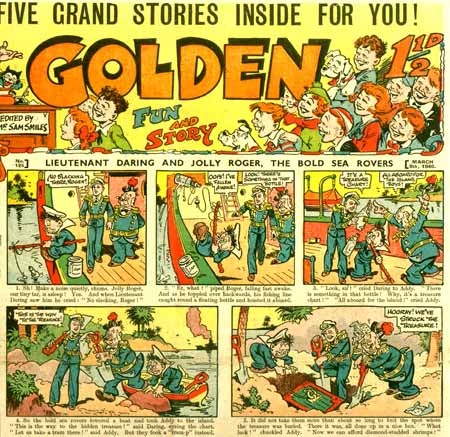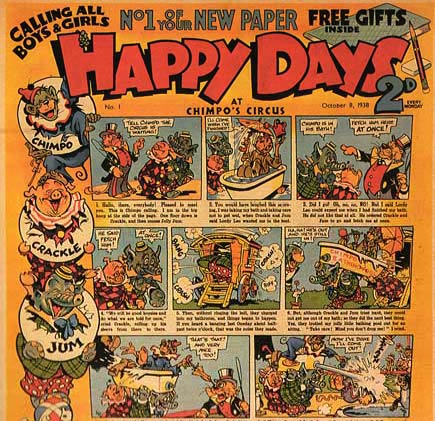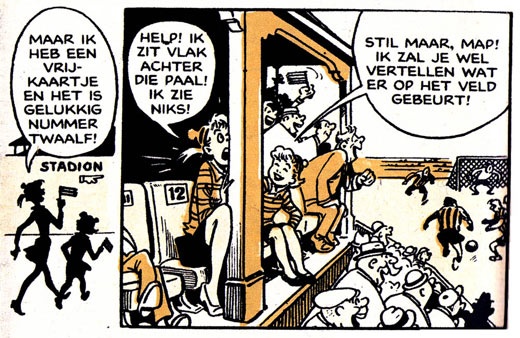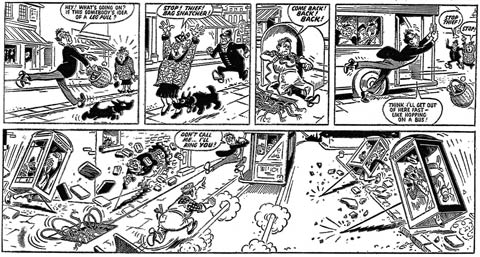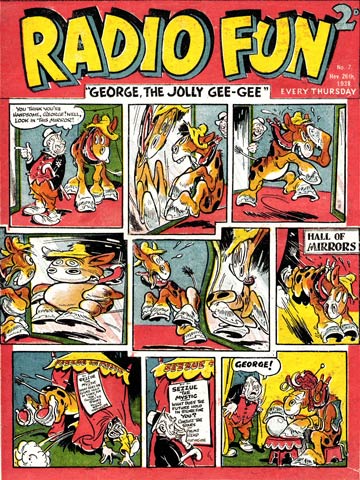'Lieutenant Daring and Jolly Roger, the Bold Sea Rovers' (Golden, 9 March 1940).
Royston Warner Wilson was one of the most important British comic artists during the so-called Golden Age, the 1930s. Born in Kettering, Northamptonshire, he attended the Norwich School of Art and was apprenticed as a furniture designer for three years. After this, he went to London to work as a junior draftsman on the air board staff in London. In 1918, a day before the armistice, Roy Wilson was called into service, where he stayed until 1920.
Cover illustration for Funny Wonder Annual 1941.
In a pub in Norwich, Wilson luckily made the acquaintance of Don Newhouse and became the assistant on this artist's comics for the Amalgamated Press, such as 'Monk and Jaff', 'Cuthbert the Carpenter' and 'Tickle and Tootle'. Wilson's specialty became animal comics. Some of his finest and funniest cartoon animals are 'George the Jolly Gee Gee' and 'Chimpo's Circus'.
'Chimpo's Circus' (Happy Days, October 1938).
During the 1930s, Wilson was the leading artist for AP humour comics like Butterfly, Funny Wonder, Merry & Bright, Crackers, Jingles, Sparkler, Jolly and Golden. However, Wilson was only allowed to sign 'Chimpo's Circus' with his own name, the comic that appeared on the front page of Happy Days from 1938. During this same decade Wilson also met Dutch comics legend Marten Toonder, who was still a mostly unknown artist at the time. He gave Toonder some tips on how to draw in a more dynamic style, which had a profound impact on his illustration work.
'Cloris & Claire, The Sporting Pair' (Dutch version: 'Map & Moppie').
During World War II, Wilson served the Home Guard, and he captured his experiences in the comic strip 'Private Muggins', published in Wonder. In the 1940s his work continued to appear in titles like Radio Fun ('Stymie and his Magic Wishbone') and Tip Top ('Happy Andy'). In his later years, Wilson drew strips about famous personalities for TV Fun and Film Fun, but slapstick work remained his favorite: 'Pitch and Toss', 'Stymie and his Magic Wishbone' and 'Morecambe and Wise'.
'Morecambe and Wise' (1964).
Wilson died from lung cancer in June, 1965. Between 1920 and his death, he made numerous comics for several magazines, and his lively art still entertains readers today.
'George, the Jolly Gee-Gee' (Radio Fun, 26 November 1938).



